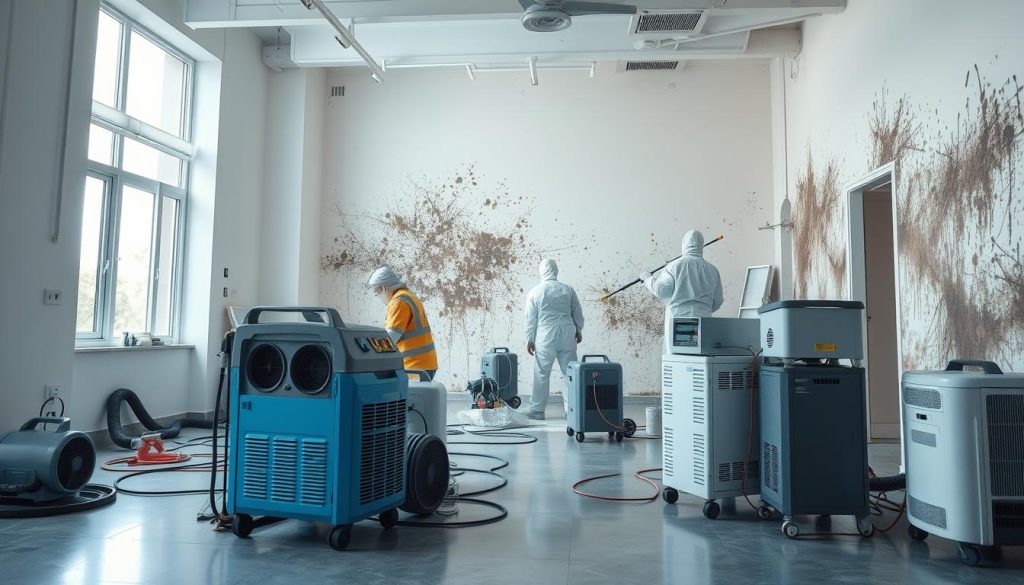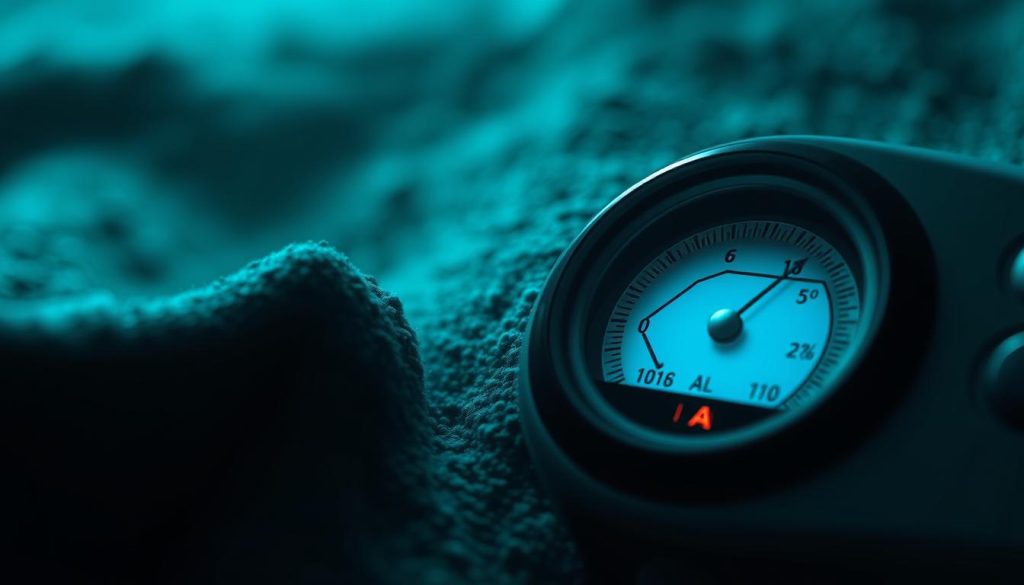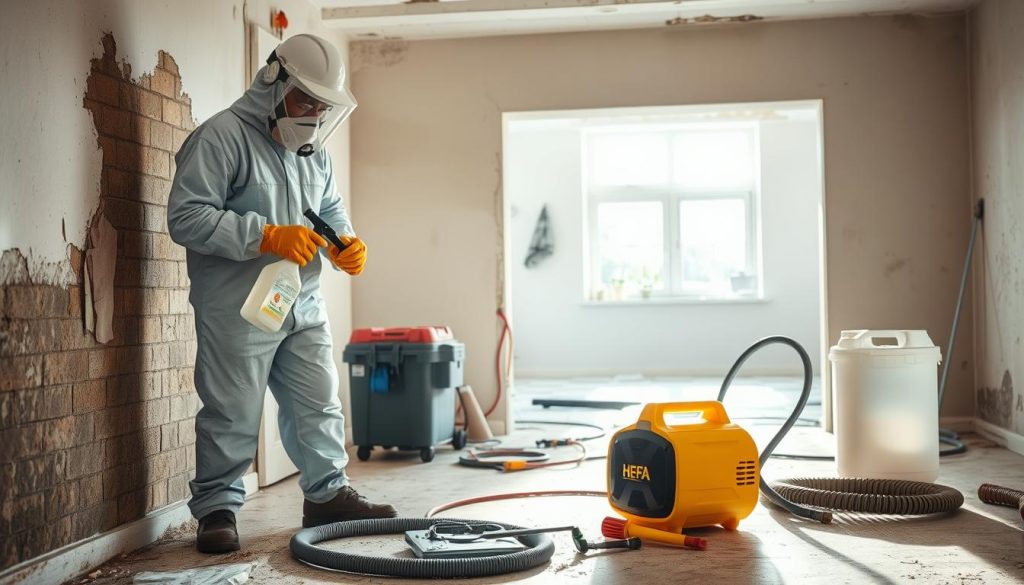Quick expectations matter when you face contamination in your home. A clear timeline helps you plan, protect family health, and limit disruption.
Typical phases span assessment (1–2 days), containment (~1 day), removal (1–5 days), cleaning (1–2 days), drying (1–3 days), and variable restoration. Minor cases may finish in one to two days. Severe infestations often extend to five to seven days or more, especially when demolition is needed.
Key factors that change the schedule include size and severity, hard-to-reach locations, humidity and temperature, and porous materials that often require removal. Rapid repair of leaks and thorough drying are non-negotiable to avoid recurring issues and protect health.
DIY fixes can lengthen the timeline and create new problems. Hiring a certified professional gives you a standardized, faster route and verified clearance so you can safely re-enter, usually 24–48 hours after work ends.
Key Takeaways
- Expect a phased process with predictable day ranges for each step.
- Minor jobs: 1–2 days; typical: several days; severe: 5–7+ days.
- Location, materials, and climate are the main factors that affect time.
- Professionals usually finish faster and provide safety verification.
- Re-entry typically occurs 24–48 hours after verified completion.
Introduction
A clear timeline ties each stage—from inspection to final repairs—to real health and property outcomes you can plan around. You’re looking for a practical primer that links expected days to real-world results. This section lays out why a steady workflow protects indoor air and speeds recovery.
The full mold remediation process includes assessment, containment, removal, cleaning, drying, and restoration. Early inspection helps find hidden sources in ducts and cavities so work is complete the first time.

Think in steps: quick fixes may seem attractive, but they often spread spores and raise health risks. Certified professionals use containment and verification to cut rework and confirm safe re-entry.
- You want a safe home and minimal disruption; a structured workflow shortens overall time.
- Fixing moisture sources fast lowers repeat visits and reduces airborne risks.
- Final testing and documentation show the job met standards and protected your environment.
Key Takeaways
A clear snapshot of likely timelines helps you plan repairs, protect indoor air, and safeguard health.
Minor, localized jobs often wrap in 1–2 days when moisture is fixed and containment is simple.
- Most projects run about 3–7 days because drying, cleaning, and verification need controlled windows.
- Severe or hidden growth commonly extends to 5–7+ days when demolition and restoration are required.
- Porous materials and concealed colonies raise time and cost; removal is often necessary.
- Humidity and access are major factors that slow progress; proper airflow and dehumidification speed recovery.
Re-entry is typically safe 24–48 hours after work ends and air tests confirm clearance. Professional planning cuts delays by reducing failed clearances and return visits that lengthen long mold remediation schedules.
AI Overview
Data and smart tools speed decisions during the remediation process without replacing certified teams. You gain clearer timelines when sensors and AI align crew schedules with actual site conditions.
Predictive scheduling and resource alignment
AI-driven scheduling predicts labor and equipment needs and reduces idle time. That keeps crews moving and trims delays that add days to your project.
Moisture analytics and remote monitoring
Moisture meters, hygrometers, and dehumidification monitoring target optimal humidity levels. Continuous readings tell you when drying goals are met so cleaning and restoration can start.

Why human expertise remains essential
Remote sensors flag sudden spikes in humidity or temperature, and particle sampling tracks air and mold spores trends. Yet certified technicians must set up containment, negative air, and decide on removal versus salvage.
- Predictive scheduling aligns crews and specialized equipment with site needs.
- Continuous monitoring pins when moisture and humidity levels hit targets for the next step.
- Remote alerts catch environmental changes early to prevent surprise setbacks.
- Air and particle data inform clearance timelines but need expert interpretation.
- Final clearance follows standards; technology informs the process while professionals confirm compliance.
How long does mold remediation take
Expect clear ranges rather than a single answer. The total time rests on access, material damage, and moisture control. Below are common scenarios with concrete examples and what speeds or slows progress.

Minor, localized growth
Small surface spots on trim or tile often finish in 1 to 2 days when the leak is fixed and drying is quick.
Typical projects
Standard jobs run about 3 to 7 days. That span covers assessment, containment, removal, cleaning, and drying before repairs begin.
Severe or hidden infestations
When colonies hide in walls or under floors, expect 5 to 7+ days. Demolition, disposal, and rebuild add time and cost.
- Porous materials like drywall and carpet usually need replacement to avoid recurrence.
- Stable air and humidity speeds drying and keeps the schedule on track.
- DIY risks often prolong projects by spreading contamination and missing the source.
Re-entry timing
Re-entry is generally safe 24–48 hours after verified completion, once dryness targets and low particle counts are met. Choosing certified teams shortens the timeline and secures clear, documented results for your home.
What factors actually change the timeline and your outcomes
Several site-specific factors shift a project from a quick repair to a multi-day effort. Below are the things that change cost, schedule, and final results.

Size and containment
The bigger the affected area, the larger the containment footprint and crew needed. Bigger jobs raise labor and disposal costs and add setup time.
Severity and hidden spread
When growth moves into wall cavities or ducts, crews must open structures and test air. Hidden colonies increase days and require more testing.
Materials and access
Porous materials like drywall, insulation, and carpet often get removed rather than cleaned. Hard-to-reach spots behind walls or under floors mean demolition and extra repairs.
Humidity and moisture control
High humidity extends drying cycles. Managing humidity levels with dehumidifiers and airflow shortens the schedule and lowers repeat issues.
- Post-verification: Air and surface clearance prevent rework.
- Restoration scope: Patching or rebuilds add variable time; lining up trades reduces idle days.
The mold remediation process and what each step typically takes
A staged workflow reduces surprises and shows when specialized equipment is required. Below are the core steps, typical days, and what crews do so you can plan time away, repairs, and re-entry.
Assessment and inspection
Assessment and inspection: 1 to 2 days
Technicians confirm the extent and find hidden pockets. Tests and visual checks form the plan and list needed equipment.
Containment setup and negative air
Containment setup and negative air: about 1 day
Barriers and negative air machines isolate work zones to stop spores from spreading through your home.
Source control and material removal
Source control and material removal: 1 to 5 days
Crews remove damaged materials like drywall or carpet when salvage isn’t feasible. Time varies with extent and access.
Cleaning and sanitizing
Cleaning and sanitizing: 1 to 2 days
Non-porous surfaces and contents get antimicrobial treatment. HEPA vacuums and wipe methods reduce airborne particles and spores.
Drying and dehumidification
Drying and dehumidification: 1 to 3 days
Monitoring ensures humidity and moisture levels hit target values before finishing work begins.
Restoration and finishing
Restoration and finishing: variable
Minor patches may take a day. Rebuilds add more time depending on damage.
Why DIY often extends timelines
DIY risks
Without containment and standardized methods you may spread contamination, fail clearance tests, and need repeat visits. Certified pros use specialized equipment and protocols to limit days and secure safe results.
- Inspection confirms scope and avoids surprises.
- Containment protects clean areas and reduces rework.
- Measured drying prevents rebound growth and speeds clearance.
Conclusion
A clear, standards-based finish gives you predictable days and verified air quality before re-entry.
Professional remediation follows a set process that corrects the source, controls containment, and documents removal and drying. This approach limits spores, reduces health risks, and protects your home from repeat growth.
To schedule a same-day assessment and receive a clear plan for your property, contact Bowerman Cleaning & Restoration, 99 Main St, Nyack, NY 10960-3109, United States. Phone: 844-269-3762. Our certified team handles containment, removal, cleaning, drying, and restoration while keeping you informed at every step.
FAQs: Typical projects run 1–2 days for minor jobs, 3–7 days for standard work, and 5–7+ days for severe infestation. Do not stay in active work areas; professionals advise safe zones. Re-entry usually follows 24–48 hours after verified air and dry surface levels. Porous materials often require removal. Weather and high humidity can extend drying, so crews use monitoring equipment to keep schedules on track.


